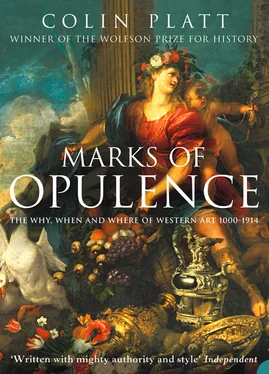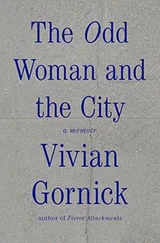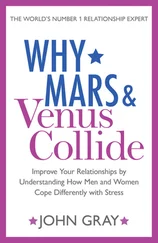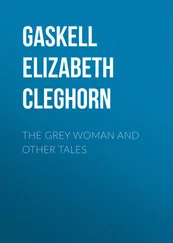Stimulated by rising prices, popular interest in the arts had never been higher than in the last decade before the Great War. ‘Art has become like caviar’, wrote the German critic, Julius Meier-Graefe, in 1904; ‘everyone wants to have it, whether they like it or not.’ However, ‘it is materially impossible [Meier-Graefe warned] to produce pure works of art at prices that will bring them within the means of the masses’. 14 And a substitute had been found in the speculative commissioning of important new works – William Frith’s The Railway Station in 1862, or Holman Hunt’s The Shadow of Death eleven years later – for subsequent engraving and mass-sale. Frith had been uncertain about his subject until Louis Flatow, the dealer, took it up. ‘I don’t think’, Frith wrote in his Autobiography and Reminiscences (1890), ‘(that) the station at Paddington can be called picturesque, nor can the clothes of the ordinary traveller be said to offer much attraction to the painter – in short the difficulties of the subject were very great.’ 15 Yet such was his painting’s enduring appeal that engravings of The Railway Station were still hanging on parlour walls two generations later, when Clive Bell wrote:
Few pictures are better known or liked than Frith’s Paddington Station … But certain though it is that Frith’s masterpiece, or engravings of it, have provided thousands with half-hours of curious and fanciful pleasure, it is not less certain that no one has experienced before it one half-second of aesthetic rapture – and this although the picture contains several pretty passages of colour, and is by no means badly painted … Paddington Station is not a work of art; it is an interesting and amusing document … But, with the perfection of photographic processes and of the cinematograph, pictures of this sort are becoming otiose … (they) are grown superfluous; they merely waste the hours of able men who might be more profitably employed in works of a wider beneficence. 16
Where Frith’s world ended and Bell’s began is debatable. In the 1890s, William Frith R.A. – ‘Chevalier of the Legion of Honour and of the Order of Leopold; Member of the Royal Academy of Belgium, and of the Academies of Stockholm, Vienna, and Antwerp’ – could still count on the support of the great majority of academicians in counselling aspiring artists to study ‘the great painters of old’, while predicting that ‘the bizarre , French, “impressionist” style of painting recently imported into this country will do incalculable damage to the modern school of English art.’ 17 However, when the once-fashionable Berlin Realist, Anton von Werner (1843–1915), looked back in 1913 on his long career, all he could see was waste and failure: his careful art overtaken by the daubs of the Expressionists. 18 Some believe Gustave Courbet’s A Burial at Ornans (1850) to be the first ‘modern’ work; others see Manet’s Olympia and Le déjeuner sur l’herbe (both of 1863) to be Modernism’s beginning; and there are those again who would prefer to start only with the Cubists. However, what is certain is that the ‘incessant work’ of a Werner or a Frith – ‘The whole of the year 1861, with fewer interruptions than usual, was spent on The Railway Station ’, Frith noted in his journal 19 – was no longer demanded of the successful modern artist; and money, as a consequence, had lost its power. There is only one nation today – the United States of America – where art convincingly follows money, and where ‘superfluity’ still makes everything possible. Take, for example, the extraordinary architecture of present-day Chicago. ‘Recognisableness’, wrote Aldous Huxley in Art and the Obvious (1931), ‘is an artistic quality which most people find profoundly thrilling.’ And sixty years afterwards, Hammond, Beeby and Babka, architects of the Washington Library Center (1991), were to give Chicago’s literati a cornucopia of such references: from the Library’s rusticated base, through its rundbogenstil façade, to the huge grenade-like exploding terminals of the pediment. 20
The Grand Projet still lives on in modern architecture. And there are more big country houses being built in Britain today than at any time since the mid-nineteenth century. At Mexico’s Guadalajara, Jorge Vergara, a self-made billionaire, has hired the world’s most famous architects, including the Deconstructivists Philip Johnson and Daniel Libeskind, to build him a showcase of their works. In Seattle, Bill Gates’s huge new mansion is set to become the largest private palace of his 1990s generation: the nearest equivalent, a century on, of George W. Vanderbilt’s Biltmore House (1888–95) – prodigal emblem of America’s Gilded Age. But as national economies continue to grow, the pre-eminence of the individual patron has been lost. John Pierpont Morgan (1837–1913), second-generation banker and art-collector extraordinary, was wealthier than any of the Vanderbilts. He began serious collecting only in the 1890s, yet was able to amass, before his death, a remarkable hoard of paintings and drawings, manuscripts and incunabula, ivories and enamels, tapestries, maiolica and oriental porcelains, second to none in the West. The like would be impossible today. In 1913, J.P. Morgan’s personal fortune, it has been estimated, could have met the entire investment needs of the United States of America for as much as a third of that year. To do the same now would require the combined fortunes of the top sixty super-rich, with Bill Gates (‘the world’s richest billionaire by a wide margin’) accounting for barely a fortnight. 21
For better or worse, the individual collector-patron has lost the power to transform an entire culture. We are unlikely, that is, ever to see again another Peter or a Catherine ‘the Great’. But the arts too have changed radically since the birth of Modernism. And if I end my ‘essay’ – the word is Jacob Burckhardt’s – with the Fall of the Old Empires and the Academies’ dying breath, it is because nothing thereafter has been the same. An essay, I warned my students, must have an argument. And I return repeatedly in this book to money as the driver of high achievement in the arts, and to the transforming power of great riches. However, I have never seen money as the sole begetter of high quality, any more than Burckhardt himself thought the ‘genius of the Italian people’ ( Italienischer Volksgeist ) the only explanation of the Renaissance. ‘In the wide ocean upon which we venture’, Burckhardt began The Civilization of the Renaissance in Italy (1860), ‘the possible ways and directions are many; and the same studies which have served for this work might easily, in other hands, not only receive a wholly different treatment and application, but lead also to essentially different conclusions.’ 22 I take his point entirely; for one very good reason why Burckhardt’s Civilization has become a classic and is still read today, is the candour of that disavowal of omniscience.
My final paragraph is an apology. In the course of my argument, I have given many important artists too little space or, in some cases, have failed to mention them at all. One missing person is the Copenhagen painter, Vilhelm Hammershøi (1864–1916), master of the psychologically-penetrating portrait and quiet interior. Like the Unknown Warrior, he shall stand for all the rest: in memoriam.
CHAPTER ONE A White Mantle of Churches
Rodulfus Glaber ( c. 980– c. 1046), chronicler of the Millennium and author of The Five Books of the Histories , witnessed two millennial years in his lifetime. The first was the Millennium of the Incarnation of Christ (1000); the second, the Millennium of his Passion (1033). While disposed to tell of miracles and portents, of plagues, of famines and other horrors, Glaber’s message in neither case was of Apocalypse. Instead he chose to write not of the Coming of Antichrist nor of a Day of Wrath, but of a Church resurgent and victorious:
Читать дальше












